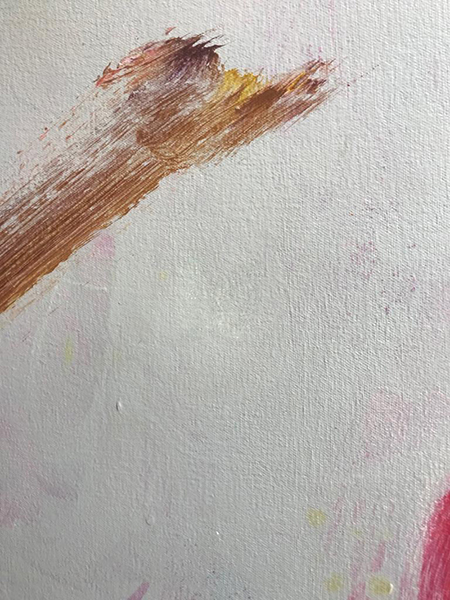Accidental damage to oil paintings comes in many forms; spillages and stains on artworks are very common and can happen so easily. For many of our clients, the damage is not of their own doing but has instead happened while renting out their home or while work has taken place. Examples of substances we have recently removed include ink, red wine, marker pen, food, lipstick, pencil, plaster, paint, nail varnish and silver polish.
It can be very obvious when such damage occurs to paintings and can really ruin the appeal of a painting. Thankfully, regardless of what the substance is, there is always some form of treatment available if your artwork is stained.
Take a look below for our advice on how we can remove such marks so you would never know they’d existed and how you can put measures into place to avoid such damage.
How are spillages and stains removed?
Before we receive any paintings with staining into the studio, we will already have found out exactly what the substance is that’s marked the painting. If our client doesn’t know – perhaps because the painting has been in a tenanted house – our first priority would be to discover what it is. That way, we can make a plan to remove it if we know how it is likely to react to treatment.
Without knowing if the substance is water-soluble, for example, would be harder to know what will remove it.
Before conducting controlled tests on the substance itself, we also need to conduct tests on the painting. Knowing whether the painting is water or solvent-sensitive, for example, will guide us to know what we can avoid using on the stain. The best treatment for one stain may be a water-based solution, for another, it could be silicone-based gels.
If the painting is not varnished, the substance will be directly on the paint layer and so might have affected it and caused it to change – it may now be softer or have become more sensitive. This is another variable our conservators will be aware of and look out for.
It’s a very careful and delicate process to test both the painting and the substance. Once we have found a solution that will not harm the painting but can carefully remove the stain, we can begin the removal process.
When the stain is removed, it is likely that some minor retouching will be required. This is especially the case for unvarnished paintings where the sheen of the paint layer may have changed.
 What can I do to prevent spillages and stains?
What can I do to prevent spillages and stains?
In everyday life, unfortunately, it isn’t always possible to guard against accidental damage, but there are some steps you can take to minimise the risk of your artworks being unnecessarily stained.
If your property is tenanted, moving artworks to an unused room is a sensible idea, and covering artworks with a dust sheet if building work is taking place is a good plan.
Varnish is a good guard against such damage because it protects the paint layer. Some oil paintings (particularly contemporary) are left unvarnished due to the artist’s intentions or because the paint and materials used are not suitable for varnishing. If this is the case, then glazing can also be a good idea to prevent anything from touching the painting.
If you would like our advice on removing a stain from your artwork, please contact us for our no-obligation help.

 What can I do to prevent spillages and stains?
What can I do to prevent spillages and stains?




